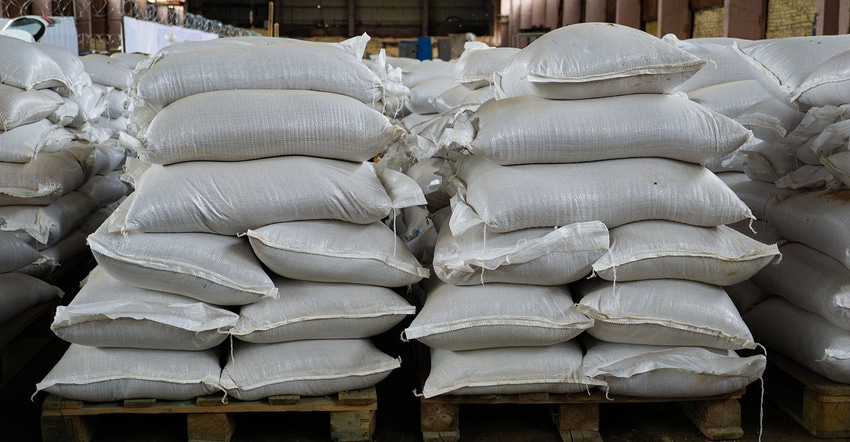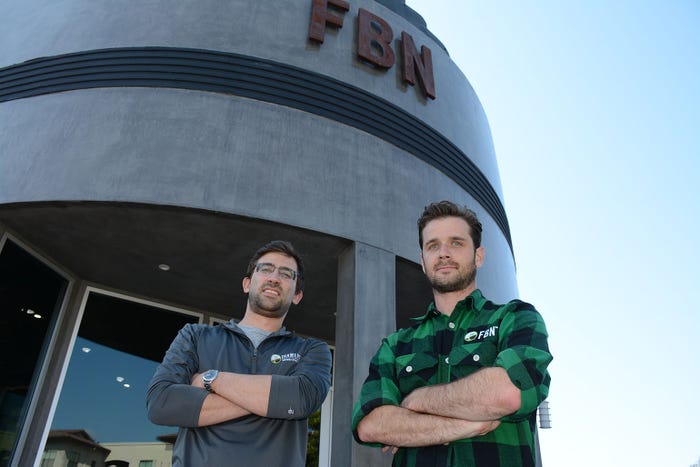
In the heat of crop input buying season it’s time to reflect on where the ag e-commerce world is headed – and why it isn’t there already.
“There,” in this case, is an Amazon-like business model for agriculture. One that is easy and allows for simple price comparison. If it’s happening for consumers, why not farmers?
Yes online shopping is a powerful disruptor. USDA reports a 40% rise in farmer online input buying in the past four years. But it turns out the farm supply chain has some even more powerful relationships – more powerful than the desire for price transparency and competition.
Despite growing online options thousands of farmers happily continue to buy from local retailers. For some it’s about service and expertise; but it’s also because those local businesses support schools, 4-H, and ball teams. There’s power in community.
Still, procurement is a key business function in a farm operation. And online purchasing is a force that won’t go away any time soon.
Three channels
Ag e-commerce today has evolved, more or less, into three channels: the retailer-to-farmer online-only marketplace (like Amazon); the manufacturer-to-farmer direct online sales; and the retailer-farmer ‘omni-channel’ experience (online and physical, like Best Buy). There are hybrids and variations, but these check most of the boxes, as this report from Purdue indicates.
In model one independent online companies offer a meeting point for farmers to place orders, which then go to a participating retailer; examples include AgVend, Agrellus and CommoditAg.
In the second channel ag input manufacturers sell directly to farmers and pay a commission if they use an online platform. This model may offer price transparency and appeal to farm operations that need low cost and not service.
A unique hybrid version of this is Farmers Business Network, a digital-first platform with no brick & mortar stores (though producers can pick up from some of warehouses), but with local sales reps who work with members and farmer dealers. FBN also has its own registered molecules in chemicals and seed genetics.

In either case, this channel faces resistance in regions where established ag retailers are plentiful and relationships go back generations.
“Direct sales platforms face the challenge of selling a more robust portfolio of branded products as not all crop protection, seed or fertilizer manufacturers are willing to go directly to farmers,” says Purdue ag economist Scott Downey.
Illinois farmer Steve Pitstick agrees. “The market in the ‘I’ states is a lot more difficult to penetrate because we have a robust tin shed network of sellers,” says Pitstick, an FBN farmer-adviser since 2014. “We don’t have a problem with competition here. But in the fringe areas they don’t have the robust retail network because many of those states only became corn and bean states in the post-ethanol boom.”
The third approach, omni-channel, is ag retail’s answer to digital disruption, where brick and mortar dealers like Winfield United or Nutrien Ag Solutions also offer online sales integrated into existing sales structures, and often teamed with precision ag and business management tools. Omni-channels developed as a response to changing customer needs; they often allow customers access additional services, from agronomy to farm planning. Last April a company called Proagrica offered retailers a platform to integrate existing systems and sales channels into a single online portal for customers who want to place orders by themselves.
However, retailers that sell both ways still have a higher overhead cost (staff, brick-and-mortar) compared to strictly online venues. There may also be potential conflicts between salespeople who work with the same customers but through different channels.
“Our customers are free to purchase off our omni channel and we’ve seen increased usage the last two years,” says Jeff Tarsi, senior vice president of North American Operations at Nutrien Ag Solutions. “They can buy product and pay bills, but maybe more important, they can access data and information by specific fields. They might use digital tools to select germplasm or pull up soil or tissue sample analysis.
“That’s where I see this technology going - it’s a wide information platform.”
Continued resistance
FBN continues to look for ways to build its online customer base even as big ag manufacturers continue to resist selling through the online startup company. On Jan. 8, a class action complaint was filed in Southern Illinois. Last February Competition Bureau Canada began a formal investigation of anti-competitive practices related to an FBN-owned Canadian retailer.
Meanwhile last fall FBN dropped its annual $700 membership fee with hopes to attract a larger pool of potential customers. Its membership surged from 16,000 to over 22,000 farms.
“We were blown away,” says Charles Baron, an FBN co-founder and the company�’s Chief Innovation Officer. “Clearly thousands of farms are looking for alternative ways to buy and save. We had our largest fall buying period by a wide margin last year.”
FBN launched in 2014 with Seed Finder, an analytics system aggregating millions of farmer-volunteered data points on seed plantings, including yield potential and prices paid for individual hybrids. It has since moved into selling inputs as well as health insurance, livestock, farm financing, crop insurance and marketing & sustainability services.
“They have become an ala carte menu of what you might need,” says Pitstick. “Each of these offerings have brought them membership.”
The broader product selection and free membership may be a sign FBN is doubling down on its efforts to disrupt the traditional way farmers buy stuff, not just in the United States and Canada, but also Australia.
“Our business is providing members with savings on inputs, finance, and helping them market better,” Baron says. “Our mission is making farms more profitable and we earn our revenue as they use FBN services. So for us, it was simple - we serve more farms better by reducing the friction. When FBN was a paid membership and farmers had to take out their credit card, that’s friction.
“Very simply, a bigger network makes FBN more useful and valuable for all members and consequently, for all farmers.”
Already scrambling
Ag retailers were already scrambling to adjust when digital disruption came along. As crop input companies massively consolidated, retailers braced for consolidation at the retail level. They also worry about future ability to sell products, as controversial weed killers like dicamba and glyphosate face rigorous legal and public scrutiny.
“We’re going at the speed our customers are going,” Tarsi says. “The business is transforming, so, if you’re not a step ahead, you’re a mile behind.”

K. Elliott Nowels, a longtime industry operative and communications counselor with The Elliott Group, Newbury, Ohio, says there is an overcapacity in ag’s national retail distribution channel that has to be corrected.
“Some big cooperatives and big company-owned retailers hire a lot of people and have built a lot of capacity, including multi-million-dollar headquarters,” he says. “When you’re a great big [retail] operation and you ship what you ship, you may use two or three warehouses on the way. Every one of them has people and overhead costs. Each step includes a set of wheels, people, diesel, and overhead.
“Somehow you have to capture a margin to pay for that.”
The big farm dilemma
Dealers also try to stay ahead of the needs of farm customers – many of which have rapidly expanded. In a bid to gain more control over timely applications and cost structure, grain farms began to supplant the services they once hired out. They bought their own spray and fertilizer rigs, on-farm grain storage, and hired their own agronomists. According to Purdue research a grain farm needs about 2,500 acres to justify the cost of a self-propelled sprayer.
“They have plans to get certain returns per acre and input costs have to be at a certain level because they want to send their kids to college too,” Nowels says. “They find ways to do that by owning a tractor-trailer they can go pick up fluid fertilizer, or get their own spray rig, or have product shipped direct to their farm warehouse.”
Tarsi recognizes the farm consolidation issue, but it’s not something he -- or any retailer for that matter – can control. He believes retailers can remain relevant by focusing on solutions and value.
“I don’t like to think of us as just providing seed and chemicals,” says Tarsi. “We need to help customers get a better Return on Investment. Today’s ag retailer needs to be a one-stop shop for applications, fertilizer, seed, seed treatment and access to the best crop protection products and service out there.”
These days that includes financing.
“As growers get larger one of their biggest hurdles is finding someone to finance them,” he says. “Two decades ago local banks did the majority of financing but that’s not the case today. It’s one reason we now offer Nutrien Financial.
“It’s quite a commitment to be a retailer in today’s agriculture world,” says Tarsi. “We’re really committed, but it takes a lot of capital to run this business. A lot of people don’t realize all the components that go into a retail operation.”
Brick-and-mortar retailers bring local value, “and I love them for that,” says Nowels. “But if they aren’t bringing that local value because of costs, or they have trouble hiring and keeping smart people in the face of technology, it can become a challenge. When the leading growers get smarter and smarter, you have to keep pace with them, or the retailer becomes irrelevant.”
In the end, getting supplies and service to farms will continue to evolve - that’s business. And disruptors like the internet will keep fueling that evolution.
“This is the way capitalism is supposed to work: finding answers to economic questions and helping people be more responsive,” concludes Nowels. “It’s supposed to sharpen all of us. If you’re not bringing value at every turn you might find yourself left behind.”
About the Author(s)
You May Also Like






